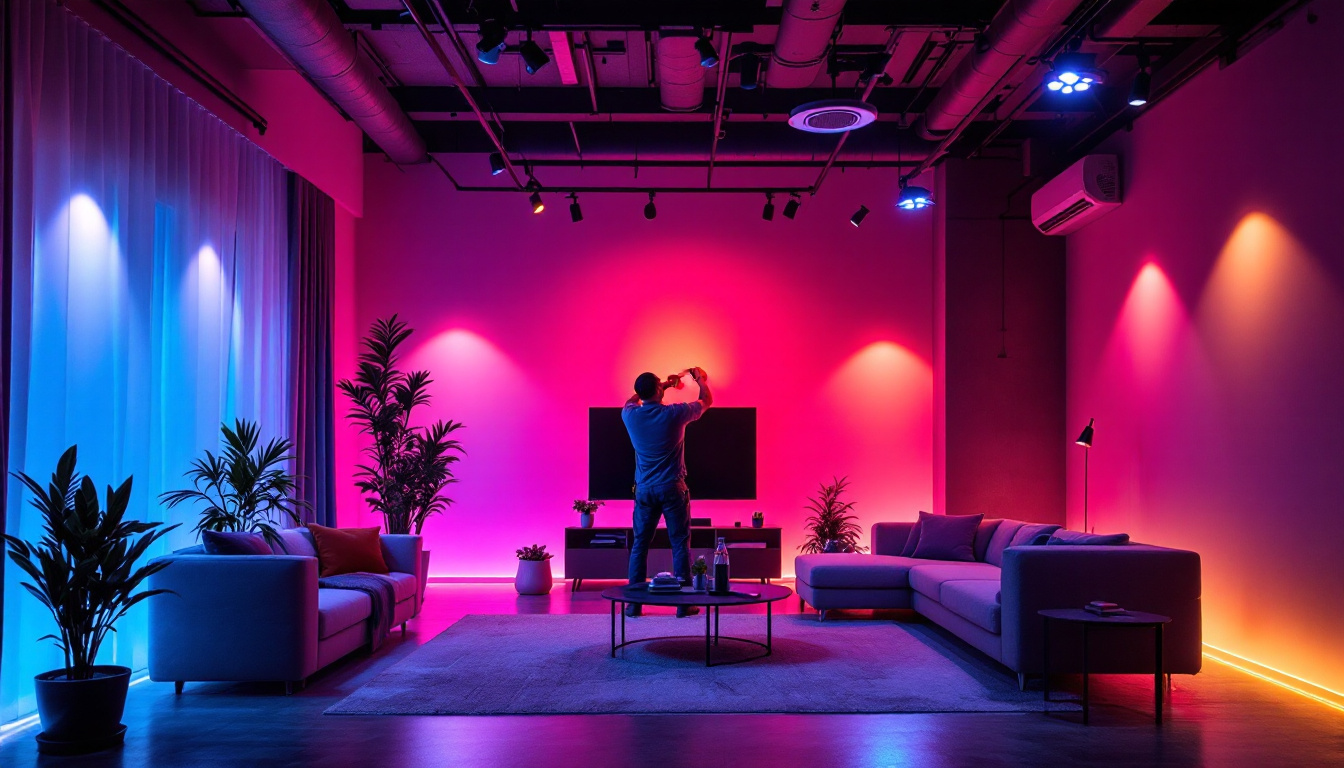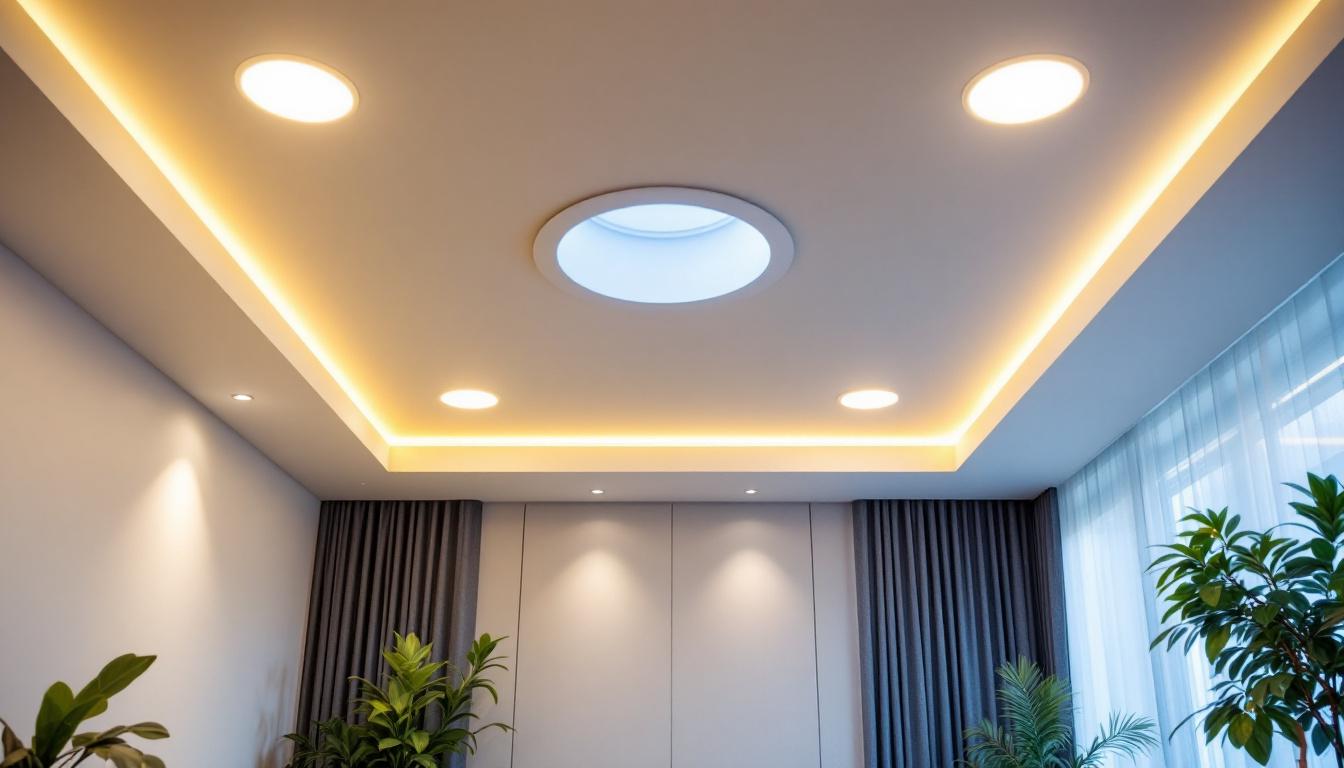
RGB room lighting has emerged as a transformative element in modern interior design, offering versatility and creativity in lighting solutions. For lighting contractors, understanding the nuances of RGB lighting is essential for delivering exceptional results to clients. This article delves into the key aspects of RGB room lighting, providing insights that can enhance project outcomes and client satisfaction.
RGB lighting refers to the use of red, green, and blue light to create a broad spectrum of colors. By adjusting the intensity of each color, a wide array of hues can be produced, allowing for dynamic and customizable lighting solutions. This technology has gained popularity in residential, commercial, and entertainment spaces, making it a valuable tool for lighting contractors.
At the core of RGB lighting is the principle of additive color mixing. When red, green, and blue light are combined in various proportions, they create different colors. For instance, mixing red and green produces yellow, while combining all three colors at full intensity results in white light. Understanding this fundamental concept enables contractors to design lighting systems that meet specific aesthetic and functional requirements.
Moreover, the ability to manipulate these colors allows for the creation of mood-enhancing environments. For example, a warm red hue can evoke feelings of comfort and intimacy, making it ideal for dining areas, while a cool blue light can promote concentration and alertness, suitable for workspaces. By mastering the nuances of RGB color mixing, lighting designers can tailor their installations to not only illuminate spaces but also influence the emotional responses of those who inhabit them.
There are several types of RGB lighting fixtures available on the market, each suited for different applications. LED strips, for example, are highly versatile and can be used for accent lighting, under-cabinet illumination, or even in coves. RGB bulbs, on the other hand, can replace traditional light sources in fixtures, allowing for easy upgrades without extensive modifications.
Additionally, smart RGB lighting systems have gained traction, offering remote control and automation features. These systems can be programmed to change colors based on time of day or user preferences, providing an enhanced user experience. Some advanced systems even integrate with home automation platforms, allowing users to synchronize their lighting with music or movies, creating an immersive atmosphere for entertainment. Furthermore, the energy efficiency of LED technology ensures that these vibrant lighting solutions not only enhance aesthetics but also contribute to sustainable practices, making them a popular choice among environmentally conscious consumers.
The applications of RGB lighting are vast, ranging from residential to commercial and even theatrical uses. Understanding these applications allows lighting contractors to tailor their services to meet diverse client needs.
In residential settings, RGB lighting can create ambiance and enhance the overall aesthetic of a room. Homeowners often seek to personalize their spaces, and RGB lighting provides a unique opportunity to do so. Whether it’s for a cozy movie night or a lively gathering, the ability to change colors and moods with the click of a button adds a layer of customization that many clients find appealing.
Moreover, RGB lighting can be integrated into various areas of the home, including living rooms, bedrooms, and even outdoor spaces. The versatility of RGB fixtures allows for creative designs that can transform ordinary spaces into extraordinary environments.
In commercial settings, RGB lighting plays a crucial role in branding and customer experience. Retailers often use colored lighting to highlight products, create an inviting atmosphere, or even influence purchasing decisions. For instance, a restaurant might use warm RGB tones to foster a cozy dining experience, while a tech store might opt for cooler hues to convey a modern and innovative image.
Lighting contractors need to be aware of the specific goals of their commercial clients and how RGB lighting can help achieve them. This understanding can lead to more effective lighting designs that enhance brand identity and customer engagement.
While the aesthetic benefits of RGB lighting are significant, there are also technical considerations that lighting contractors must keep in mind. Proper installation and configuration are essential for achieving optimal performance and longevity of RGB lighting systems.
RGB lighting systems often require specific power supplies and load management to function correctly. It’s crucial to calculate the total wattage needed for the installation and ensure that the power supply can handle the load. Overloading a circuit can lead to flickering lights or even damage to the fixtures.
Contractors should also consider the placement of power sources and controllers. Ensuring that these components are easily accessible can simplify maintenance and troubleshooting in the future.
Control systems are integral to the functionality of RGB lighting. From simple remote controls to sophisticated smart home integrations, the choice of control system can greatly impact user experience. Contractors should familiarize themselves with various control options available in the market, ensuring compatibility with the RGB fixtures being installed.
Automation features can enhance the appeal of RGB lighting systems. For instance, programming lights to change colors at specific times or in response to environmental changes can add convenience and sophistication to a client’s lighting setup.
Designing with RGB lighting requires a balance of creativity and technical knowledge. Lighting contractors must consider not only the aesthetic goals of their clients but also the practical aspects of installation and operation.
One of the primary benefits of RGB lighting is its ability to create mood and atmosphere. Different colors can evoke various emotions; for example, blue light is often associated with calmness, while red can create a sense of warmth and excitement. Understanding color psychology can help contractors design lighting schemes that resonate with clients’ desires.
Incorporating dynamic lighting effects, such as color fades or strobe effects, can further enhance the experience. However, it’s essential to ensure that these effects align with the intended use of the space. For instance, a relaxation area may benefit from gentle transitions, while a party space might thrive on more vibrant and energetic changes.
RGB lighting should complement other design elements within a space. Contractors should collaborate with interior designers and architects to ensure that the lighting enhances the overall aesthetic without overpowering it. This collaboration can lead to innovative solutions that harmonize color, texture, and light.
Additionally, considering the placement of fixtures is crucial. Strategic positioning can highlight architectural features or artwork, creating focal points that draw the eye and enhance the overall design.
Despite its many advantages, RGB lighting can present challenges that contractors must navigate. Identifying potential issues and developing solutions is vital for successful project execution.
One common challenge with RGB lighting is maintaining color consistency across different fixtures. Variations in manufacturing can lead to discrepancies in color output, which can be particularly problematic in larger installations. To mitigate this, contractors should source fixtures from reputable manufacturers known for quality control.
Additionally, utilizing color calibration tools can help ensure that all fixtures produce the desired hues. Regular maintenance and checks can also prevent color drift over time, ensuring that the lighting remains consistent throughout its lifespan.
RGB lighting fixtures, especially LEDs, can generate heat, which can impact performance and longevity. Proper heat management is essential to prevent overheating and potential damage. Contractors should ensure that fixtures are installed in well-ventilated areas and consider using heat sinks or cooling systems where necessary.
Regular maintenance checks can help identify any overheating issues early, allowing for timely interventions that can prolong the life of the lighting system.
The landscape of RGB lighting is continuously evolving, with new technologies and trends emerging regularly. Staying informed about these developments can position lighting contractors as industry leaders.
Smart lighting technology is at the forefront of the RGB lighting revolution. Innovations such as voice control, app integration, and AI-driven automation are making RGB lighting more accessible and user-friendly. Contractors who embrace these advancements can offer clients cutting-edge solutions that enhance their living or working environments.
Moreover, as smart home ecosystems become more prevalent, the demand for RGB lighting that integrates seamlessly with other smart devices will continue to grow. Understanding these systems will be crucial for contractors looking to stay competitive in the market.
As sustainability becomes a priority for many clients, the demand for energy-efficient lighting solutions is on the rise. RGB LED fixtures are already known for their low energy consumption, but advancements in technology are likely to further enhance their efficiency. Contractors should stay informed about the latest energy-efficient products and practices to meet the growing demand for sustainable lighting solutions.
Incorporating energy-efficient RGB lighting not only benefits the environment but can also lead to cost savings for clients, making it a win-win situation.
RGB room lighting represents a dynamic and versatile approach to modern lighting design. For lighting contractors, understanding the intricacies of RGB technology, its applications, and the technical considerations involved is essential for delivering outstanding results. By staying informed about industry trends and advancements, contractors can provide innovative solutions that meet the evolving needs of their clients.
As the demand for customizable and aesthetically pleasing lighting continues to grow, those who embrace RGB lighting will find themselves at the forefront of the industry, ready to illuminate spaces in ways that inspire and delight.
Ready to elevate your lighting projects with the dynamic possibilities of RGB room lighting? At LumenWholesale, we provide lighting contractors with the highest quality, spec-grade RGB lighting products at unbeatable wholesale prices. Say goodbye to local distributor markups and hello to superior lighting that meets the highest industry standards. With our hassle-free bulk buying and free shipping, you’ll enjoy premium lighting solutions that are both affordable and convenient. Don’t compromise on quality or value—Wholesale Lighting at the Best Value is just a click away. Partner with LumenWholesale and light up your projects with confidence and creativity.

Discover expert techniques and best practices for lighting contractors working with mobile home electrical outlets.

Discover how 3-inch recessed lighting can transform your lighting installations into profitable ventures.

Discover how ceiling recessed LED lights are transforming the lighting industry and giving contractors a competitive edge.

Discover effective strategies for training your team in using can light diffusers to enhance lighting design.